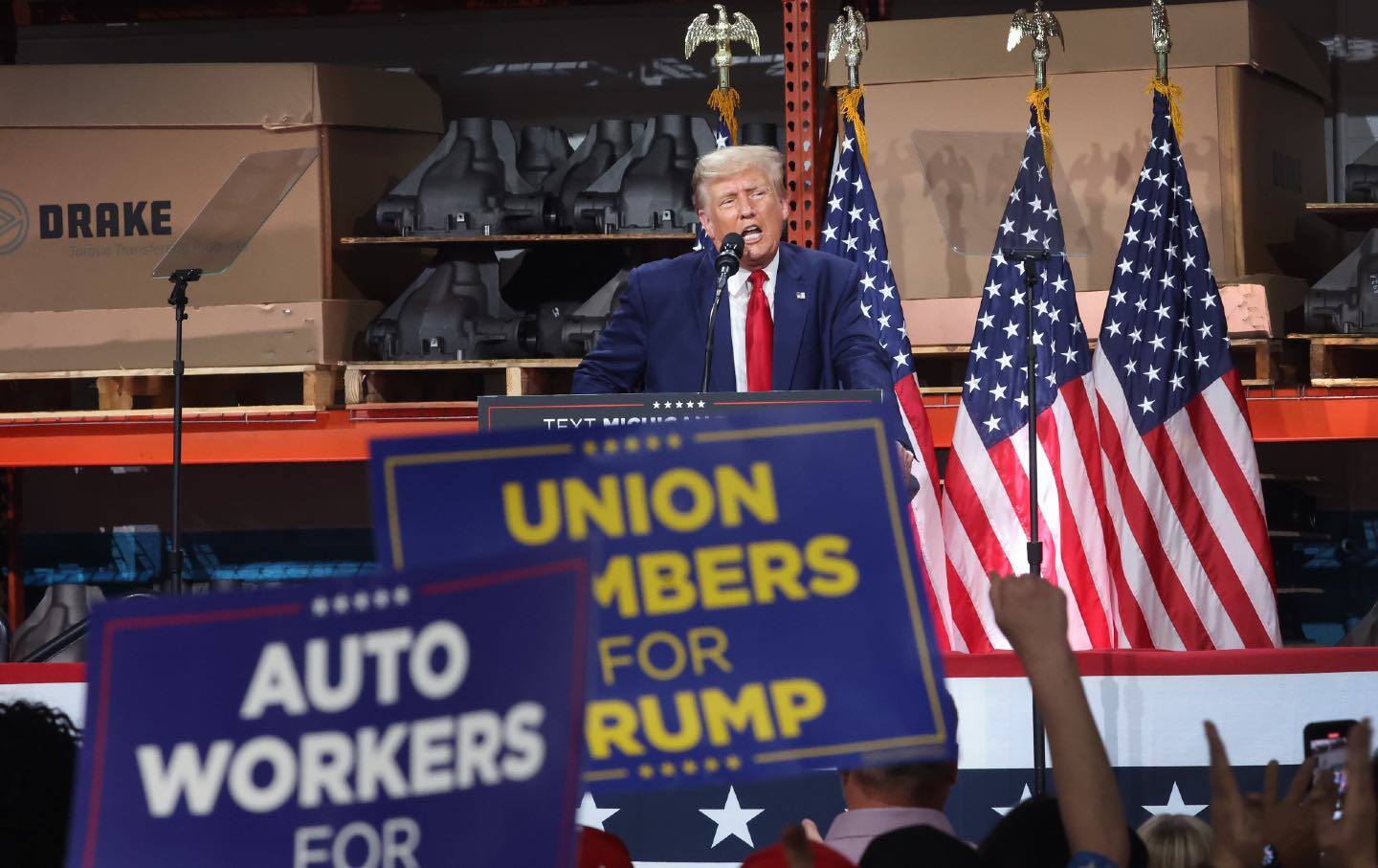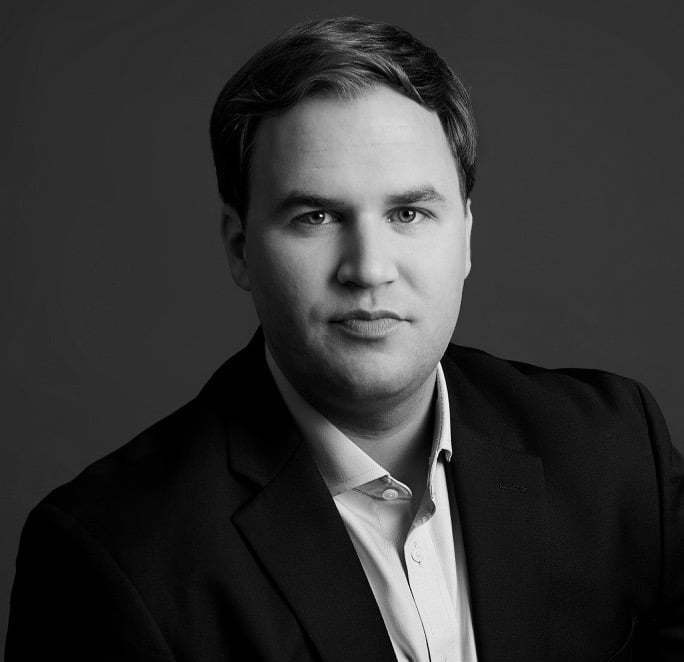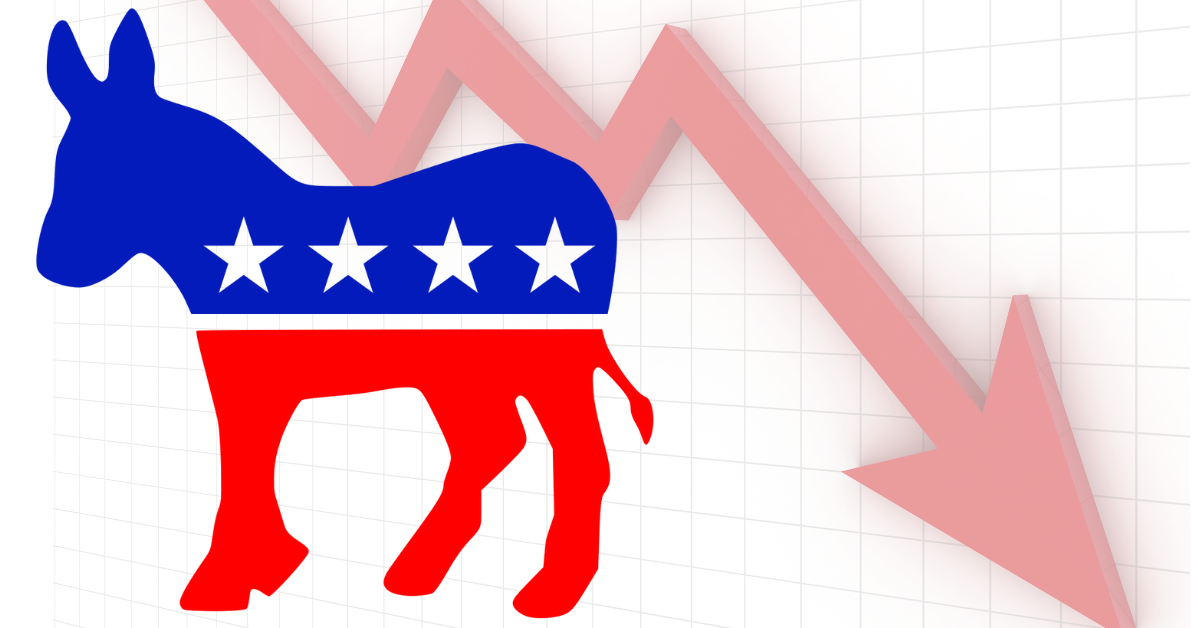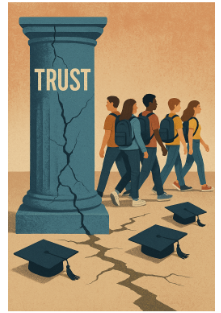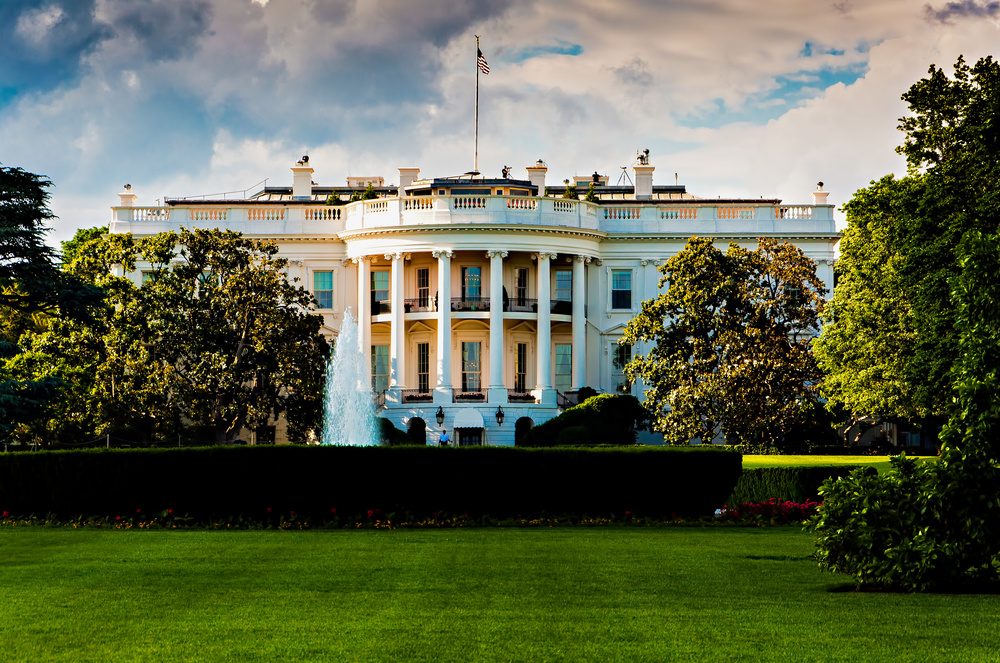Breaking down the gap between voters with college degrees and those from the working class.
What to know:
-
The Democratic Party is facing a big challenge: it's trying to appeal to both educated, affluent voters and blue-collar workers. This shift in focus, as described by the "Brahmin Left" idea, means the party might be losing touch with its traditional working-class base.
-
Working-class voters in the Democratic Party feel disconnected because they see the party's views on issues like immigration, crime, race, and gender as out of touch with their own.
-
To understand why working-class voters feel this way, we need to look at how they see things. For example, they might feel that supporting immigration hurts American workers, or that being tough on crime is more important than reforming the justice system.
-
Democrats need to find ways to bridge this gap between working-class and educated voters. This could mean having more conversations across party lines, changing how the media talks about politics, and focusing on issues that matter to everyone.
-
Ultimately, bringing working-class and educated voters together will require a combination of efforts, from listening to each other's concerns to finding common ground on important issues like jobs, healthcare, and education.
Within the complex fabric of American politics, the Democratic Party is facing a difficult dilemma as it attempts to win over voters who are educated and working class at the same time. Understanding the shifting dynamics of political support has become critical as the country navigates the turbulent waters of polarization and ideological fragmentation. This article aims to investigate the complexities that lie beneath this divide by examining the intricate relationships between socioeconomic factors, cultural shifts, and political ploys that have shaped the modern political environment.
The Rise of the Brahmin Left
The emergence of the "Brahmin Left" concept within the Democratic Party, as elucidated by political scientist Ruy Teixeira, delineates a profound shift in the party's landscape and priorities. The term "Brahmin Left" specifically refers to a faction within the Democratic Party composed of highly educated and affluent individuals, reflecting a broader trend towards prioritizing the interests and values of this demographic within the party's agenda. Teixeira's assertion that the Democratic Party has transitioned into a domain dominated by professionals and educated elites underscores a significant departure from its traditional working-class roots. This evolution is mirrored in the party's diminishing emphasis on economic concerns such as jobs, wages, and healthcare – issues that have historically resonated deeply with working-class voters.
Teixeira's observation that "the Democratic Party has moved away from its traditional focus on economic issues" encapsulates this pivotal transformation. As the Democratic Party increasingly tailors its agenda to cater to the interests and values of the college-educated and professional strata of society, it faces the risk of estranging its erstwhile base, thereby giving rise to the notion of the "Brahmin Left."
Alienation of Working-Class Voters
The alienation of working-class voters within the Democratic Party is a multifaceted issue exacerbated by the party's embrace of what Ruy Teixeira terms as "cultural radicalism." This shift has led to a disconnect between the party's stance on key issues such as immigration, crime, race, and gender, and the values held by many working-class individuals. Teixeira's assertion that the erosion of support among working-class voters stems from various factors underscores the complexity of this phenomenon.
Understanding Alienation: Working-Class Voter PerspectivesAs the Democratic Party grapples with the challenge of appealing to working-class voters, understanding the perspectives that contribute to their sense of alienation is paramount. Here are some of the most common issues met again and again in the political arena:
In context:Working-class families gathered at the local diner and discussed the latest political developments. Among them was Joe, a factory worker with a strong sense of community and a deep-rooted pride in his blue-collar heritage. As the conversation turned to immigration, Joe's frustration became palpable. "I just don't understand why the Democrats care more about helping immigrants than us hard-working Americans," he remarked, shaking his head. "We're the ones struggling to make ends meet, and all we see is more competition for jobs and lower wages." His friend, Sarah, nodded in agreement, adding, "And what about crime? It feels like every time there's talk of reforming the justice system, they're just letting criminals off the hook. We want safer streets, not leniency for lawbreakers." Tensions boiled over racial and gender issues as the conversation went on. "I'm tired of feeling like my concerns don't matter because of the color of my skin," remarked Tom, a longtime resident of the neighborhood. "The Democrats talk a big game about equality, but it feels like they're leaving us behind." Amidst the clatter of dishes and the hum of conversation, it was evident that these working-class voters felt increasingly disconnected from the Democratic Party. Despite their shared values of hard work and community, the party's stance on key issues seemed out of touch with their everyday realities, deepening the divide between them and the political establishment. |
The alienation experienced by working-class voters within the Democratic Party is not confined to a single issue but encompasses a range of concerns that reflect divergent values and priorities. Understanding these perspectives is crucial for the party to bridge the gap and rebuild trust with this demographic. By acknowledging and addressing these concerns, the Democratic Party can work towards a more inclusive and representative platform that resonates with all segments of society.
The Great Divide and the Democratic Party's Response
The concept of the "great divide" encapsulates the diverging experiences of college-educated and working-class voters over recent decades. As Ruy Teixeira observes, this phenomenon stems from a combination of economic and social factors. While college-educated voters have seen increasing advantages, including access to better opportunities, working-class voters have grappled with challenges such as deindustrialization and the decline of resource extraction areas. These contrasting experiences underscore the widening gap between these two demographic groups.
In response to the challenge of appealing to both working-class and college-educated voters, the Democratic Party must consider adopting a more populist approach. Ruy Teixeira suggests that emphasizing the protection of working-class jobs and the provision of affordable healthcare and education could resonate with these voters. This strategy entails prioritizing economic issues such as job creation, wages, and healthcare, which are of significant importance to working-class individuals. By refocusing their message on these key concerns, the Democratic Party may have the opportunity to regain support among working-class voters while still addressing the priorities of college-educated constituents.
The Future of American Politics
It is important to consider the underlying dynamics of political polarization as we navigate the complexity of America's changing political landscape. Understanding these dynamics is paramount for the future of American democracy. Political leaders and citizens alike must engage in constructive dialogue and actively seek solutions to bridge the gap between working-class and college-educated voters. By fostering a spirit of collaboration and inclusivity, we can pave the way for a more unified and equitable political landscape that serves the interests of all Americans.
Impact of Political Calcification on Media Ecosystems
Political calcification, entrenched polarization, poses a significant challenge for the Democratic Party as it seeks to navigate the divide between working-class and college-educated voters. This deep-rooted polarization exacerbates the existing challenges faced by the party, making it increasingly difficult to appeal to both demographics simultaneously. As political divisions harden, the task of finding common ground and crafting policies that resonate with diverse voter groups becomes increasingly complex. Thus, the impact of political calcification is felt keenly in the party's efforts to bridge the gap between working-class and college-educated voters.
"The role of the media ecosystem in shaping political narratives and perceptions is crucial," as highlighted by Teixeira. Indeed, understanding and effectively navigating this ecosystem are essential for political parties, particularly the Democratic Party, in shaping their messaging and reaching voters. "Strategies for the Democratic Party to counter Republican and MAGA narratives and regain control of the information environment are essential," Teixeira emphasizes, underscoring the importance of proactive measures in addressing the challenges posed by media narratives.
Path Forward: Bridging Divides and Fostering Unity
In the face of growing polarization and the widening gap between working-class and college-educated voters, it is evident that a one-size-fits-all solution will not suffice. Instead, a multifaceted approach is necessary to foster unity and tackle these complex challenges. This approach must address not only political strategies but also societal attitudes and structural issues that contribute to division.
One key aspect of this approach is fostering cross-partisan dialogue. In today's hyper-partisan environment, it's increasingly rare to see meaningful conversations between individuals with differing political beliefs. However, by creating spaces for dialogue and encouraging respectful discourse, we can begin to break down barriers and find common ground. Initiatives such as town hall meetings, community forums, and online platforms dedicated to civil discourse can play a crucial role in facilitating these conversations.
Another important component is reimagining media ecosystems. The proliferation of social media and the rise of partisan news outlets have contributed to the echo chamber effect, where individuals are exposed only to information that aligns with their existing beliefs. To combat this, we need to promote media literacy and support independent, fact-based journalism. Additionally, efforts to diversify newsrooms and ensure that a range of perspectives are represented can help counteract the polarizing effects of media consumption.
Shared democratic values must also be prioritized if unity and confidence in political institutions are to be fostered. Regardless of political affiliation, most Americans value principles such as equality, justice, and freedom. By centering our political discourse around these core values, we can transcend partisan divides and work towards common goals. This requires political leaders to prioritize bipartisanship and compromise, rather than engaging in zero-sum politics.
Wrap Up
The Democratic Party's struggle to capture the support of both college-educated and working-class voters reflects broader societal shifts and political dynamics. This analysis underscores the imperative for the party to reevaluate its strategy and prioritize issues resonant with both demographics, such as economic security, job creation, and healthcare. Addressing these challenges demands a concerted effort, with potential solutions including embracing a more populist message and countering divisive narratives to rebuild a broader coalition.
This phenomenon also indicates a major "partisan realignment" in the demographics of American voters, with important socioeconomic groups shifting from one party to another. Whether this shift is enduring remains to be seen. Nonetheless, confronting these changes necessitates collaborative action from political leaders and citizens alike.
By fostering unity and bridging divides, we can fortify our democracy and ensure it reflects the diverse needs and perspectives of all Americans. Understanding and navigating the complexities of American politics is crucial for this endeavor, and only through deliberate engagement can we forge a more resilient democratic future.

